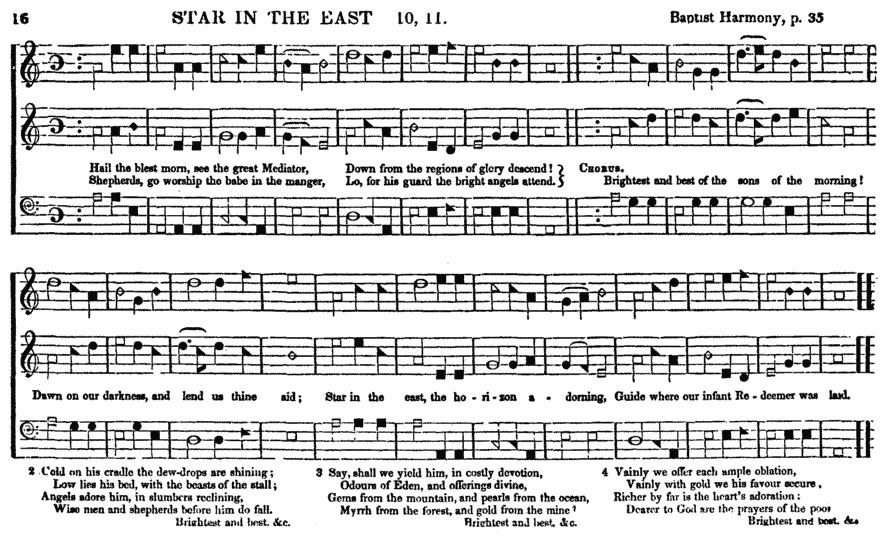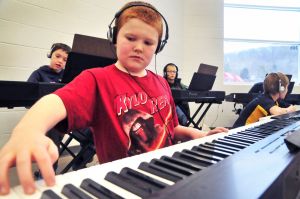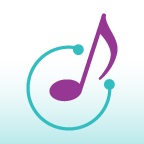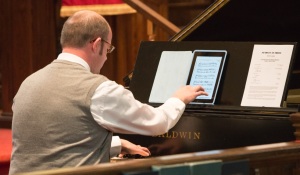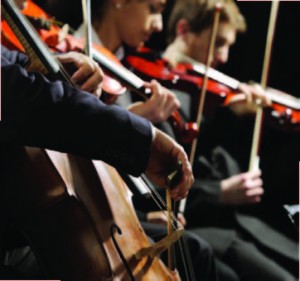Shape-note singing, a musical practice and tradition of social singing from music books printed in shape notes. Shape notes are a variant system of Western musical notation whereby the note heads are printed in distinct shapes to indicate their scale degree and solmization syllable (fa, sol, la, etc.). Since 1801 shape notes have been associated with American sacred music, specifically with singing schools, with musical conventions, and with all-day gatherings known as “singings.” Denounced by critics as uncouth, the simplified notation has persisted in the rural South, where it continues to form the basis of strong traditions of church and community singing.
History
The solmization system used in shape-note singing can be traced to Guido d’Arezzo, an 11th-century Italian monk who assigned the syllables ut, re, mi, fa, sol, and la to the six-note series—or hexachord—that corresponds to what are now recognized as the first six degrees of the major scale. Use of these syllables helped singers keep track of their place within a melody, especially when sight-reading. In 16th-century England, singers discovered they could operate effectively with only four syllables (mi, fa, sol, and la). English colonists carried the four-syllable system to North America. Meanwhile, on the European continent, the hexachord was expanded to seven syllables, one for each note in the major scale (in Italy, do, re, mi, fa, sol, la, and si). The seven-syllable system ultimately prevailed during the 19th century in England and America. Shape notation has been adapted to both the four-note fasola and the seven-note doremi system.

Shape notes, also called character notes or patent notes, are one of many notational innovations that, like solmization syllables, attempted to make sight reading easier. (Others included the tonic sol-fa system of Sarah Anna Glover and John Curwen, popular primarily in Britain.) The four shaped notes—a right triangle for fa, an oval for sol, a rectangle for la, and a diamond for mi—were invented by Philadelphia shopkeeper John Connelly about 1790 and made their first appearance in The Easy Instructor (1801), by William Little and William Smith. Over 200 different shape-note tunebooks were printed in the United States between 1801 and 1861, most of them eclectic collections including strophic hymn tunes, odes, and anthems from a variety of American and European sources. Pennsylvania and the Ohio River valley were early centres of shape-note publication. Many shape-note books included “folk hymns” (tunes drawn from oral tradition, harmonized by the compilers or other local singing teachers, and underlaid with sacred texts).

Beginning with Jesse B. Aikin’s Christian Minstrel (1846), many tunebooks were printed in seven shapes, representing the seven syllables of the doremi system. Aikin’s seven-shape notation achieved wide use in the southern United States, where it was adopted in some denominational hymnals. After the American Civil War, singing schools and shape notes became increasingly identified with the South, while declining in popularity in other regions. Many teachers switched from the four-shape system to a seven-shape system to keep pace with new teaching methods. Leading teachers and publishers established “music normal schools” for the training of teachers. Southern firms such as Ruebush-Kieffer and A.J. Showalter began to publish small collections of music every year or two. These upright songbooks gradually began to supplant the large oblong tunebooks and their fixed repertoire. After 1900, mass-market publishers such as James D. Vaughan, V.O. Stamps, and J.R. (“Pap”) Baxter printed one or more books a year of music that was largely used at singing conventions and, consequently, is known today as convention gospel music. (See below Current practice.) These songs, almost always in major keys and intended to be accompanied by the piano, imitated the popular songs and dance tunes of the Victorian era.
While shape-note gospel music cultivated a constant supply of new songs, the standard 19th-century tunebooks changed much more slowly, retaining their oblong format and repertoire, while enshrining themselves in the rural culture of the South. The Sacred Harp (1844) in particular, supported by county and regional conventions in a number of Southern states, kept its four-shape fasola notation and a large corpus of New England psalmody, fuging tunes, spiritual songs, and revival choruses in several 20th-century editions. Other early tunebook survivals include The Southern Harmony (1835) in western Kentucky, Harmonia Sacra (1832/1851) in the Shenandoah Valley of Virginia, The New Harp of Columbia (1848/1867) in East Tennessee, and The Christian Harmony (1867) in several states of the South. All of these books became the focus of all-day church homecomings and community singings and of a ritualized practice whose distinctive features include: seating by parts, facing inward in a “hollow square”; rotation of leaders, whereby each leader stands in turn in the centre of the square, selects one or more songs, and leads the singers by keeping time with a simple motion of the hand, unaccompanied by instruments; and “singing the notes” (singing each selection using the fasola or doremi syllables prior to singing the lyrics). Prayers, observances in memory of deceased singers, and a shared “dinner on the grounds” add spiritual dimension to a day devoted to music, family, and community.
Current practice
These traditions attracted the attention of scholars and folklorists, such as George Pullen Jackson and Charles Seeger, as well as of American composers such as William Schuman, Virgil Thomson, Alice Parker, and William Duckworth, who incorporated melodies from shape-note sources into their works. They also attracted folk music enthusiasts outside the South. Spurred by appearances of Southern singers at the 1964 Newport Folk Festival (in Newport, R.I.) and other events, singers from the North and elsewhere began in the 1970s to organize Sacred Harp singings, based on the Southern model and often aided by visiting Southern singing teachers. Since the formation of a National Convention in 1980, Sacred Harp singing has continued to spread to cities and college campuses in almost every U.S. state, as well as to Canada and the United Kingdom. Meanwhile, the tradition has suffered a slow decline in the rural South. Shape-note gospel singing, which once threatened to overwhelm the tune book singings, similarly has declined since the late 20th century. While some conventions emphasize performances by amateur and professional quartets, traditional community singings persist in many areas.
